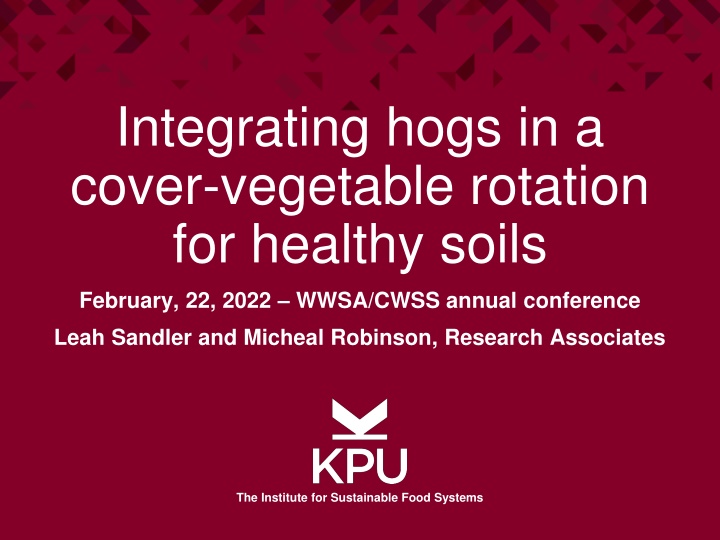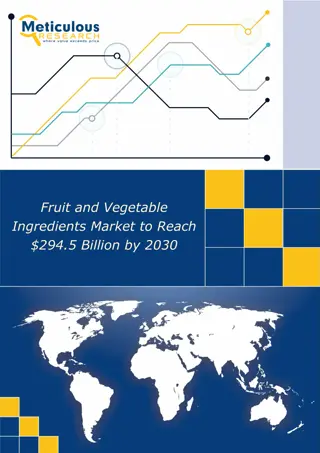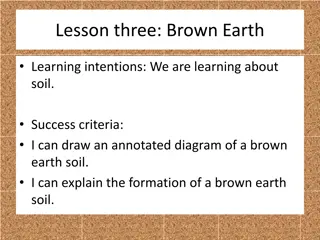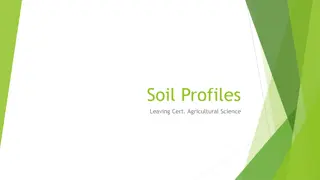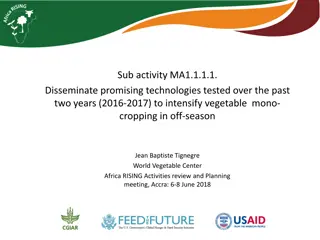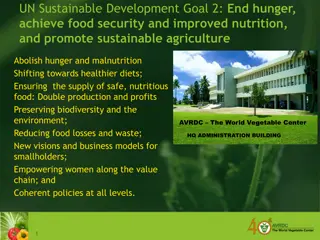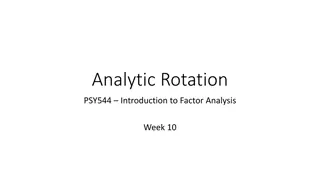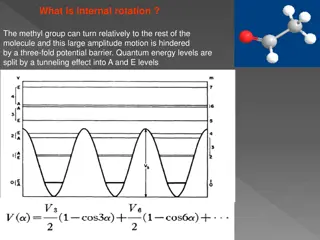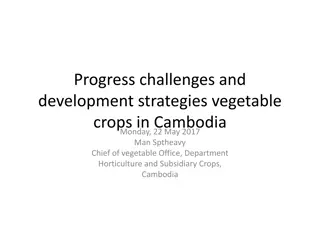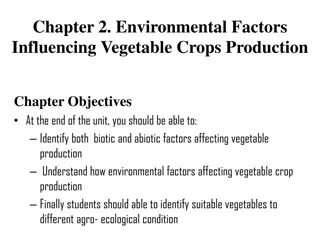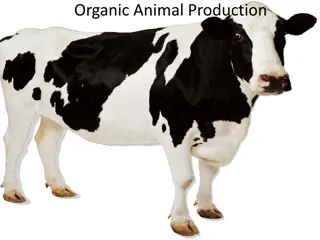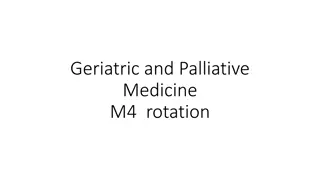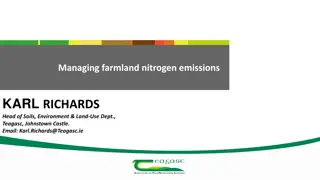Integrating Hogs in Cover-Vegetable Rotation for Healthy Soils Research Summary
Explore the research conception and objectives of integrating hogs in a cover-vegetable rotation system to enhance soil health and fertility while reducing reliance on tractor tillage. The study aims to determine the benefits of hog integration on soil quality, nutrient cycles, weed management, and vegetable harvest. Materials and methods include a comparison of grazing and tillage treatments in Tsawwassen, BC, with a focus on regenerative practices for sustainable agriculture in the Fraser Delta region.
Download Presentation

Please find below an Image/Link to download the presentation.
The content on the website is provided AS IS for your information and personal use only. It may not be sold, licensed, or shared on other websites without obtaining consent from the author.If you encounter any issues during the download, it is possible that the publisher has removed the file from their server.
You are allowed to download the files provided on this website for personal or commercial use, subject to the condition that they are used lawfully. All files are the property of their respective owners.
The content on the website is provided AS IS for your information and personal use only. It may not be sold, licensed, or shared on other websites without obtaining consent from the author.
E N D
Presentation Transcript
Integrating hogs in a cover-vegetable rotation for healthy soils February, 22, 2022 WWSA/CWSS annual conference Leah Sandler and Micheal Robinson, Research Associates The Institute for Sustainable Food Systems
Outline Research conception and objectives Materials and methods Results and conclusions ISFS Integrating hogs in a cover-vegetable rotation 2
Research Conception Many market crop farmers routinely put some growing acreage into cover crops - crop rotation plan Up to 3 times per year (spring, summer and fall) add SOM enhance fertility control weeds, diseases Practice of tilling cover crops to terminate growth negatively impacts soil structure and biological activity ISFS Integrating hogs in a cover-vegetable rotation 3
Research Conception Specific to our area (Fraser Delta) - effects are exacerbated in clay textured soils Management may require machinery, implements not available to smaller scale, start up market crop farmers ISFS Integrating hogs in a cover-vegetable rotation 4
Research Objectives Find regenerative ways to manage cover crops and on-farm fertility while reducing reliance on extensive use of tractor tillage Determine the potential benefits from integration of hogs into vegetable production Investigate the impacts of integrating hog strip grazing in a vegetable cover crop rotation system on soil quality, nutrient life cycle, weed management, subsequent vegetable harvest ISFS Integrating hogs in a cover-vegetable rotation 5
Materials and methods Tsawwassen, BC RCBD, 4 reps Two treatments: Grazing (pigs) and Tillage Main-plot: 30 ft x 230 ft Subplots: 6 per main-plot for grazing (30x38 ft) ISFS Integrating hogs in a cover-vegetable rotation 6
Materials and methods ISFS Integrating hogs in a cover-vegetable rotation 7
Materials and methods Hogs were moved through subplots as cover crop was eaten down, soil remained covered by at least 30% Moved through series of subplots two times Approx. every 7 days ISFS Integrating hogs in a cover-vegetable rotation 8
Materials and methods 3 cover crop seedings Spring oats, ladino clover, field pea Summer sudex-sudan, buckwheat, ladino clover Fall fall rye, vetch In grazing, hand spread sublot 24 hours before moving pigs, augmented 45% to account for consumption In tillage, mechanically turned in then hand spread ISFS Integrating hogs in a cover-vegetable rotation 9
Materials and methods Vegetables following hogs butternut squash, sweet corn 2 and 6 rows per main plot Sampling Weed percent cover, number, type throughout crop establishment Yield and crop performance ANOVA Fixed effects: treatment, year; Random effects: block p 0.05 ISFS Integrating hogs in a cover-vegetable rotation 16
Results ANOVA: treatment, year, treatment*year 18
Results ANOVA: treatment, year, treatment*year 19
a b b b ANOVA: treatment, year, treatment*year 20
a a a a ANOVA: treatment, year, treatment*year 21
Conclusions No statistical treatment differences in weeds Although tillage did have lower numbers Year was significant in number of weeds Treatment*year significant in corn yields 2020 yields were larger than 2021 overall No differences in squash yield ISFS Integrating hogs in a cover-vegetable rotation 22
Conclusions Successful hog rotation system- low labour and cost Grazing didn t impact weed seed bank to the next crop Need more time Corn is a heavy N user, perhaps see difference in yield due to hog nutrient input Anecdotally, were visual differences ISFS Integrating hogs in a cover-vegetable rotation 23
Acknowledgements Tsawwassen First Nation Micheal Robinson Kent Mullinix Sean Smukler Franco Lopez 24
Questions or comments: Questions or comments: leah.sandler@kpu.ca 314-598-6217 ISFS Integrating hogs in a cover-vegetable rotation 25
